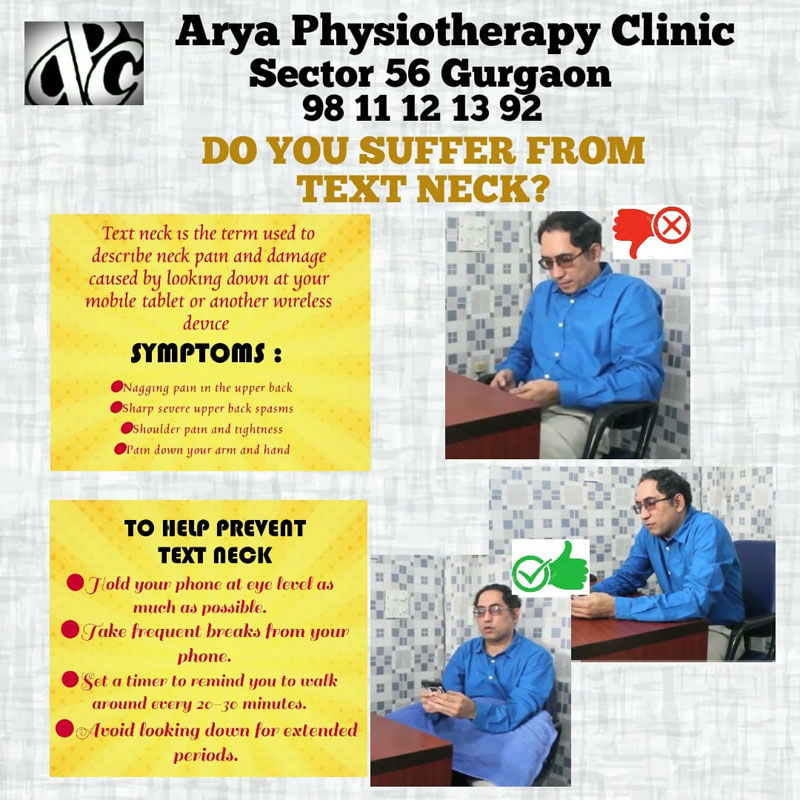Text neck” is a term that has been coined to describe the posture formed by leaning forward for prolonged periods, for example when viewing a cellphone while reading and texting, reported to cause stress injuries.This posture often results in cervical and shoulder pain, headaches and thoracic hyperkyphosis.
This condition is a growing lifestyle and health condition with the constant growth in mobile user population all over the world. See also Forward Head Posture
It is a cause for increasing concern especially with children given their greater propensity to mobile phone usage.
SYMPTOMS:
The most common presentation of Text Neck is neck pain, stiffness and soreness. The main symptoms include:
Stiff neck: soreness and difficulty in moving the neck is usually present when trying to move the neck after long usages
Pain: can be localized to one spot or may be diffused over an area, usually lower part of the neck. Can be described as dull aching or can also be sharp or stabbing in extreme cases
Radiating pain: there can often be radiation of pain into the shoulders and arms.
Muscular weakness: shoulders muscles namely, trapezius, rhomboids and shoulder external rotators are often weak
Headache: sub-occipital muscle tightness can lead to tension type headaches.
In addition to these common symptoms there can also be:
Flattening of thoracic kyphosis
Early onset arthritis
Spinal degeneration
Disc compression
Muscle weakness
Loss of lung capacity
MANAGEMENT:
Avoid excessive usage and take frequent breaks
Avoid prolonged static postures
Position the device such that it reduces stresses both on the head/neck and the upper extremities
Avoid high repetitions of movements such as prolonged typing or swiping
Avoid holding large or heavy devices in one hand for long duration
Physiotherapy Rehabilitation is found to be very effective in treating the stress injury resulting from Text Neck. It can be designed as a 2-4 week program starting with soft tissue mobilization, Grade 1 and 2 joint mobilization, active and passive stretches of tight muscles and progressing to muscle strengthening, posture retraining and home exercise program.
In acute cases, pain relief is the main goal. It can be achieved by:
Regular neck movements: rotations and side bending
Restoring function to upper trapezius and serratus
Chin tuck exercises
Ice/heat packs
Massage
Article by Dr. Deep Arya, Senior Consultant Physiotherapist & Director, Arya Physiotherapy, Gurgaon


